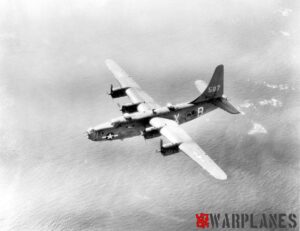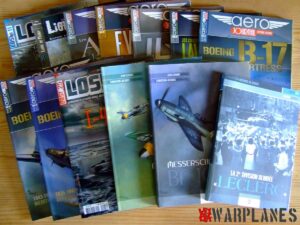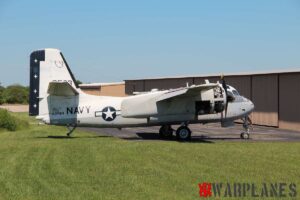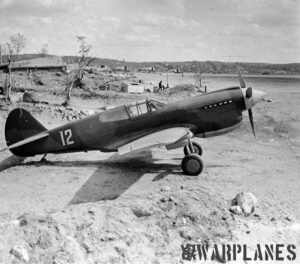Douglas Skyhawk- Heinemann’s Hot-Rod
Introduction
Although the small Douglas A4D Skyhawk looked like a lightweight fighter, its type designation ‘A’ stood for ‘Attack’. Its main task when its design was initiated was in fact that of a short-range tactical nuclear bomber that was capable to carry the lightest nuclear bomb available at that time from an aircraft carrier.
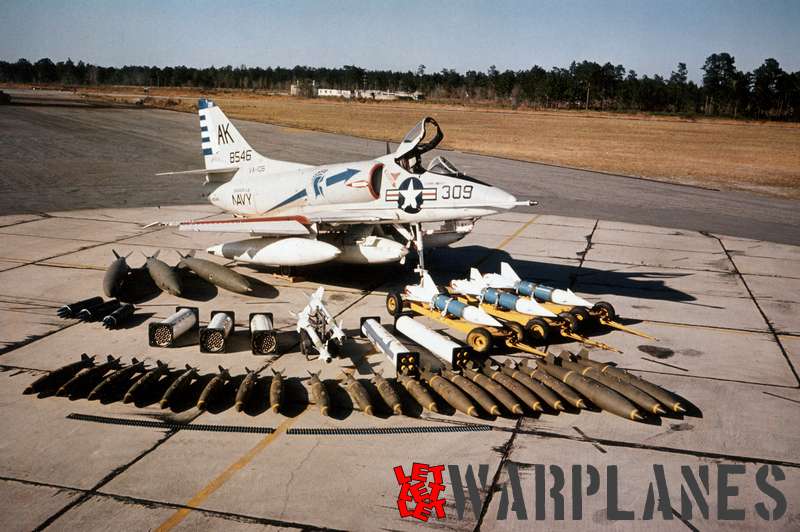
When it made its first flight on 22 June 1954 nobody could have predicted it would be produced on a very large scale, would become a major export weapon system and would still fly more than fifty years later………
Project initiation
With the piston engine Douglas AD-1 Skyraider in production and the faster turboprop powered A2D-1 Skyshark in its testing phase, Douglas wanted to offer the U.S. Navy an all-jet single engine attack plane that could be used from aircraft carriers. The AD-1 had basically the capability to carry a lightweight Mk.7 nuclear bomb, but it was too slow to avoid the nuclear blast once the weapon was detonated. The Skyshark was faster, but failed to gain production status because of its unreliable engine. So the ‘single jet, single pilot, single mission’ principle remained. Douglas design engineer Edward Heinemann was well aware of the problems for the design of such a nuclear attack jet bomber, in particular of raising weights and costs of such a project. He approached the problem from a different view by reducing the weight of all aircraft components already in the design phase. It was a very elaborate and difficult task but together with his colleague Leo Devlin they finally thought to have solved the weight problem. Their final proposal was a small low wing delta wing jet-plane that looked very promising. The Navy was initially not impressed since they simply could not believe the small Douglas design would have sufficient range, but when they studied the weight figures and project details from Douglas, they finally drew up specifications and ordered the construction of a mock-up. What the Navy wanted was a jet plane with nuclear capability that had a top speed of 805km/h, a combat radius of 555 km a weapon load of 908kg and a maximum gross weight of 13,608kg. The new Douglas jet, that received the type designation A4D, could easily meet these figures.
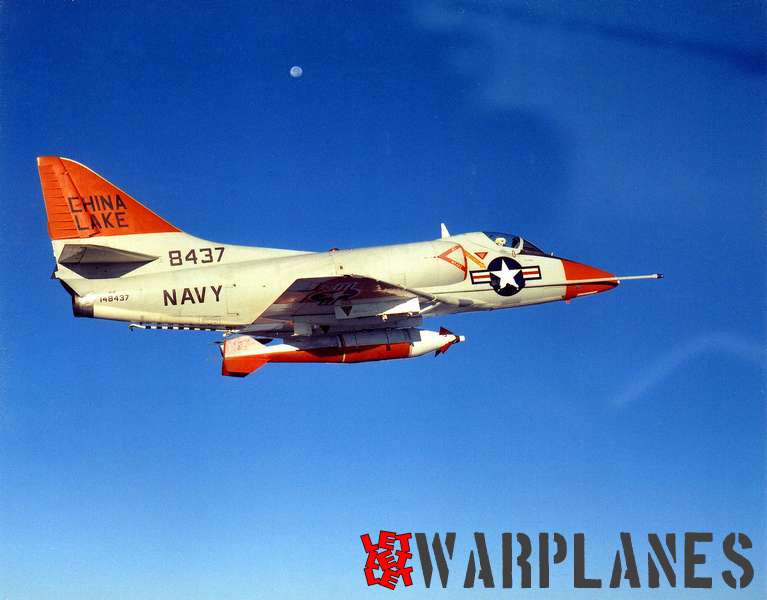
Prototype test flying:
The Navy ordered the construction of a full-scale mock up in January 1952. After inspection in the next month some changes were requested and in June of that year a contract for one XA4D-1 prototype, a static test frame and one A4D-1 evaluation prototype was signed. The XA4D-1, named ‘Skyhawk’ by Douglas, made its first flight on 22 June 1954 flown by Douglas test pilot Bob Rahn (Robert O. Rahn, first pilot to fly the Douglas A-4 Skyhawk, passed away at age 77 on Thursday, May 21, 1998, a victim of ALS). Except fore some slight oscillations observed from the rear fuselage this 45 minutes flight was fully satisfactory.
It was followed by the second A4D-1 evaluation prototype, which made its first flight on 14 August 1954.
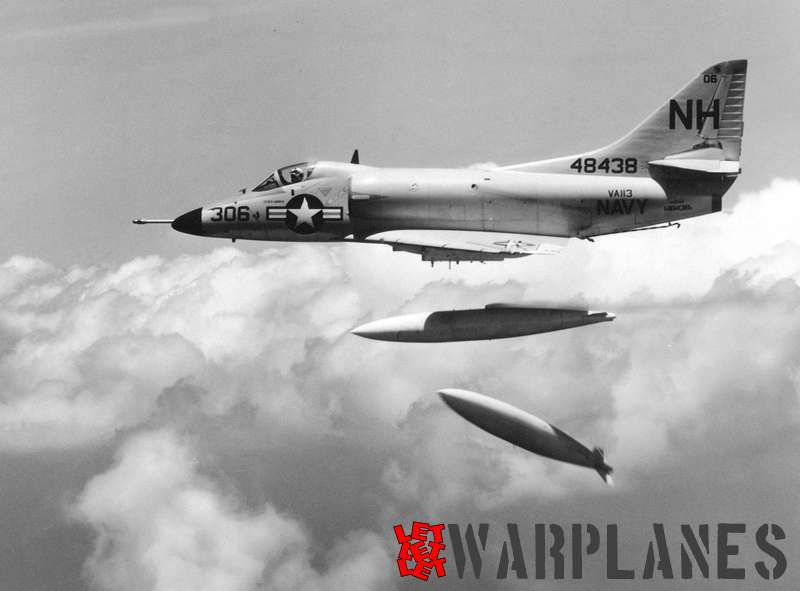
Meanwhile the U.S. Navy had ordered a further nine production Skyhawks; soon followed by an additional order of ten. All nineteen machines were used for operational evaluation in close cooperation with the Douglas Test Group. In spite of performing reasonably well for a new fighter, some problems encountered had to be solved. Already from the first test flights of the prototype some tail buffeting was noted under certain flying conditions. Douglas tested six different configurations of the rudder to improve this. Final solution was found for the improved A4D-2 model in a configuration using ‘inside out’ ribs of the rudder. Not only all forthcoming Skyhawks were fitted with the new characteristic rudder, but they were also retrofitted on most models already flying. In general the A4D-1 fully met its design specifications as a lightweight bomber. Further it was found to be easy to fly and highly manoeuvrable. Since there had to be enough ground clearance (not only for the nuclear Mk.7 bomb but also for a large drop tank under the fuselage centre) the undercarriage legs of the Skyhawk were relatively long with as disadvantage it had to be carefully landed under crosswind conditions. For carrier operation this minor problem was non-existing since the carrier always turned head-on against the wind during deck landing operations but landings on shore-based runways could be quite tricky with crosswind! Another unusual feature for an aircraft designed to operate from an aircraft carrier was its non-folding wing. The wingspan was so small that it could be used in the standard carrier deck transport elevator without the need of this!
Into service at the U.S. Navy and U.S. Marines:
The first production A4D-1, BuNo 137814, made its first flight 23 December 1954. There was such great urge to put the Skyhawk into service that for the engine selected, the Wright J65, existing stocks had to be used. The J65 was in fact a license built version of the British Armstrong Siddeley Sapphire. This was the same type as used on the F-84F Thunderstreak fighter and in fact the new Skyhawks received many times reconditioned engines! The potency of the new attack plane was clearly shown when U.S. Navy Lt. Gordon Grey flew on 15 October 1955 a 500 km closed-circuit with a world record speed of 1118.8 km/h with A4D-1 BuNo. 137820 Although it was standard A4D-1, it flew for the record flight in bare aluminium colours with the top of the vertical tail painted bright red. After the record flight it remained in service until April 1969! The Skyhawk entered naval service at Squadron VA-72 ‘Blue Hawks’ under the command of Bob Hunt. The VA-72 Skyhawks were stationed at the aircraft carrier Franklin D. Roosevelt.
The second squadron receiving the Skyhawk was VA-93 ‘Blue Blazers’ operating from the aircraft carrier Ticonderoga. Other naval air squadrons received the Skyhawk as standard fighter bomber. Due to its small size it could also operate from smaller and earlier aircraft carriers. Skyhawks not only found their way to the U.S. Navy, but also to the U.S. Marines.
Further developments:
An improved version, the A4D-2, had the new ribbed rudder, strengthened rear fuselage and improvements in cockpit layout and gunsight. It also had an uprated J65-W-16A turbojet producing 3538 kg thrust. The first A4D-2 made its first flight on 26 March 1956 and production was started alongside the A4D-1 production line. Already at a very early stage of production a refueling probe for in-flight refueling was fitted. The A4D-2 was further made suitable for carrying a large 1136 liter capacity fuel tank with built in ‘drogue and hose’ equipment for the ‘buddy refueling system’ where Skyhawks were used to refuel other Skyhawks in flight.
Variants of the A4D-2 were the A4D-2N fitted with a more powerful radar system for operations under all weather conditions. The A4D-2N became the first to be produced in 1962 under the new type designation system as A-4C, where the earlier versions were renamed as A-4A (A4D-1) and A-4B (A4D-2).
Two A-4Cs, BuNos. 148483 and 148490, were specially converted and supplied for testing by the U.S. Army as a close support aircraft. For operation from small unpaved fields it was fitted with double main wheels and a drag chute. For the jet close support fighter, the Northrop N-156F and the Italian Fiat G.91 were also tested but at the end the Army agreed to ‘stick’ to rotorcraft. It finally resulted into the AH-64 Apache…..
The A4D-3 with a Pratt & Whitney J52 engine with new avionics and the A4D-4 were never built. To prevent confusion with the pre-1962 A4D basic designation, the designation A-4D was never used.
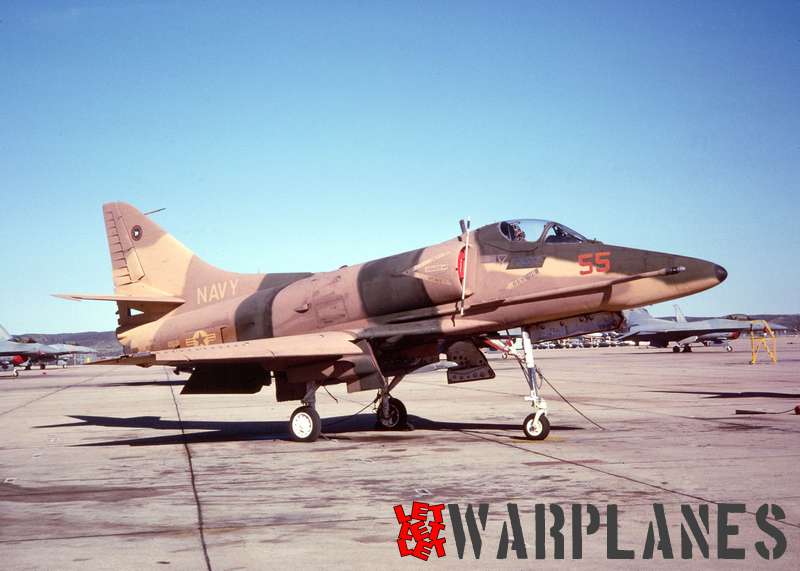
The A4D-5, re-designated as the A-4E, was the next improved version. It was fitted with a Pratt & Whitney J52-P6A jet engine offering 4218 kg thrust. It was lighter, more powerful and more fuel efficient than the previous J65 engine. The J52 needed somewhat larger air intakes fitted with splitter plates. Further, the A-4E was strengthened to carry a heavier offensive load, including two additional drop tanks under the wings if needed. The A-4E also had improved avionics including a new TACAN, Doppler navigation and a radar altimeter.
The next version received directly the new type designation A-4F. It was further improved based on the experiences of the earlier versions. The A-4F was also the first Skyhawk with the characteristic dorsal hump placed directly behind the cockpit. The hump was a logical place for new and improved avionic systems. Not all A-4Fs had the hump behind the cockpit and some models (about one hundred) were fitted with a much more powerful J52-P408 engine giving 5080 kg thrust. Some earlier A-4Fs were also fitted with this engine like the aircraft used by the U.S. Navy aerobatic display team Blue Angels. The Blue Angels Skyhawks also missed the avionics hump. For landings on land-based military and civil runways some A-4Fs was fitted with a braking parachute under the tail to assist with crosswind landings.
The A-4F was also the first Skyhawk to be modified as a biplace trainer as the TA-4F.
The mock-up was displayed at the Paris Airshow of 1965 at Le Bourget airport as ‘TA-4E’.
This mock-up was very realistic since a written-off A-4E airframe was used for its construction. The first two TA-4Fs (sometimes also designated as TA-4E) were converted form existing A-4E airframes; the remaining were newly built. Except for its extra seat under an enlarged canopy the TA-4F could be fully used as an attack bomber. During the war in Vietnam it was even used for forward air control (FAC) missions. Later during its operational life many TA-4Fs were exclusively used for training with most of the combat equipment removed including one or both of the cannon.
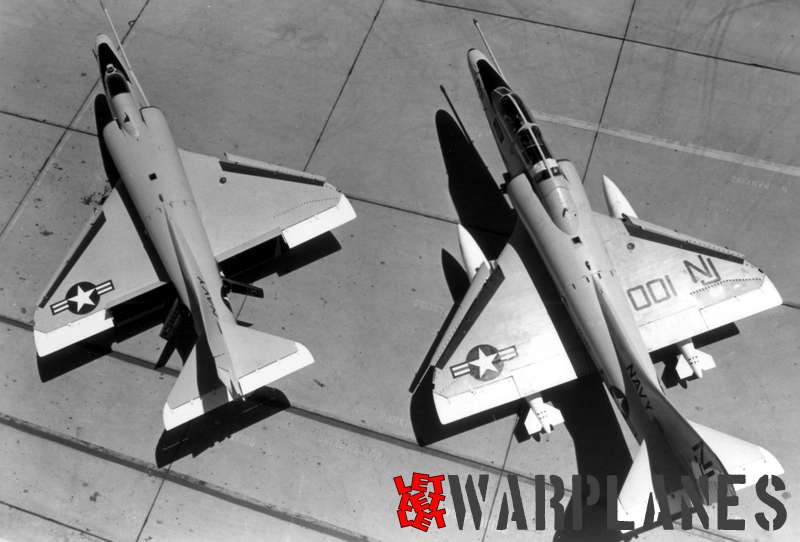
Four TA-4F two-seaters were converted for naval exercises to simulate adversary aircraft with special electronic equipment. Designated as EA-4F their BuNos. were 152852, 152869, 153481 and 154655. During their operational life, three of these four aircraft crashed.
As a replacement fore ageing Grumman TF-9J Cougar advanced trainers the TA-4J was developed. It was basically a TA-4F with the tactical equipment removed and fitted with a lower rated J52-P6 engine for a prolonged lifespan. A total of 277 TA-4Js were newly built; another 131 were converted from TA-4F stock.
The A-4L was intended for the National Reserves, in particular the National Reserves of the Navy and the Marines, The were all adapted versions of the A-4C. Early 1969 a total of 100 were converted for this purpose.
The A-4M was a Skyhawk version specially developed to serve at the U.S. Marines from provisional airstrips. It was fitted with a Pratt & Whitney J52-P408 engine offering 5080 kg thrust. Other changes included a tail parachute, increased ammunition for the board guns, a revised windscreen/canopy and a self-starting unit. The first flight of the A-4M took place on 10 April 1970. The last production A-4M was rolled out in February 1979, which in fact was the last one of the 2960 Skyhawks completed!
The A4-M was also the last Skyhawk version for the U.S. Navy/Marines.
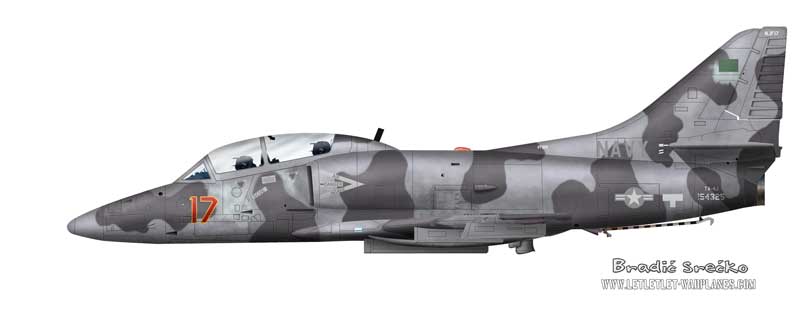
Production for U.S. naval forces:
XA4D-1: 137812 (1) (+ one unregistered airframe for stress testing)
A4D-1: 137813 (2nd evaluation prototype) to 137831 (19)
13919 to 139970 (52)
142142 to 14235 (94)
Total production A4D-1: 165
A4D-2: 142082 to 142423 (60)
142416 to 142423 (8)
142674 to 142953 (280)
144868 to 145061 (194)
Total production A4D-2: 542
A4D-2N: 145062 to 145146 (85)
147669 to 147849 (181)
148304 to 148317 (14)
148435 to 148612 (178)
149487 to 149646 (160)
150581 to 150600 (20)
Total production A4D-2N: 638
A4D-5 (A-4E):
148613 to 148614 (2)
149647 to 149666 (20)
149959 to 150138 (180)
151022 to 151201 (117)
151202 to 151261 (141)
Total production A4D-5: 499
A-4F: 152101 (converted from A-4E)
154172 to 154217 (46)
154281 to 154286 (5)
154970 to 155069 (100)
Total production A-4F: 147
TA-4F: 152102 and 152103 (converted from A-4E)
152846 to 1525878 (33)
153459 to 153531 (73)
153660 to 153690 (31)
154287 to 154343 (57)
154614 to 154657 and 155071 (45)
Total productiom TA-4F: 241
TA-4J: 155070 (1)
155072 to 155119 (48)
156891 to 156950 (60)
158073 to 158147 (75)
158453 to 158527 (75)
158712 to 158723 (12)
159099 to 159104 (6)
Total production TA-4J (newly built): 277
A-4M: 158148 to 158196 (49)
158412 to 158435 (24)
159470 to 159493 (24)
159778 to 159790 (13)
160022 to 160045 (24)
160241 to 160264 (24)
Total production A-4M: 160
Two A-4M’s, BuNos. 155042 and 155049, were converted from A-4Ms.
The export Skyhawks:
To boost the Skyhawk sales outside the U.S.A. Douglas tried already at an early stage to find overseas customers. As a simple, easy to fly and easy to maintain attack plane for a reasonable price many foreign countries showed their interest and final orders followed.
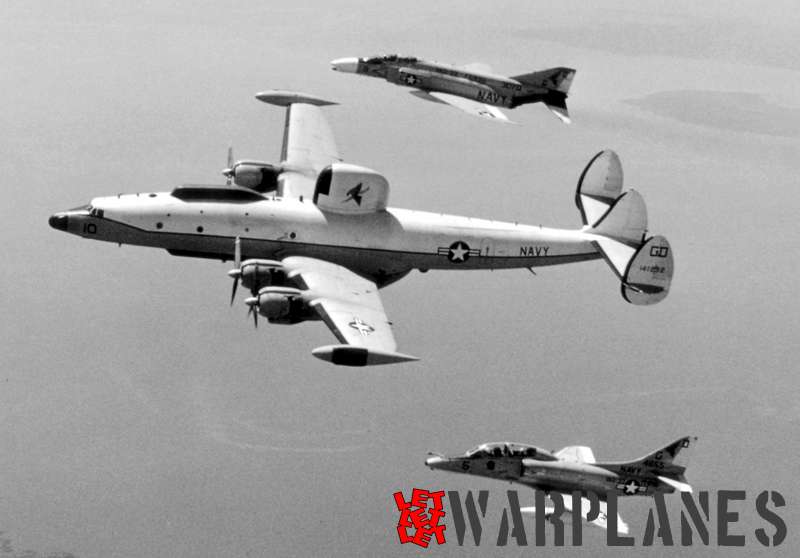
-Argentina
The first export operator of the Skyhawk was the Argentinean air force. They already received in 1966 a first batch of 25 refurbished and upgraded surplus A4D-2Ns (A-4Bs) known as the A-4P. They carried the military registration numbers C-201 to C-225. A second batch of 25 A-4Ps with registrations C-226 to C-250 was supplied a year later. Another four were supplied for spares recovery. All A-4P’s were powered by used Wright J-65-16A jet engines rebuild to zero hours. The A-4P was refurbished by Douglas at their Tulsa plant.
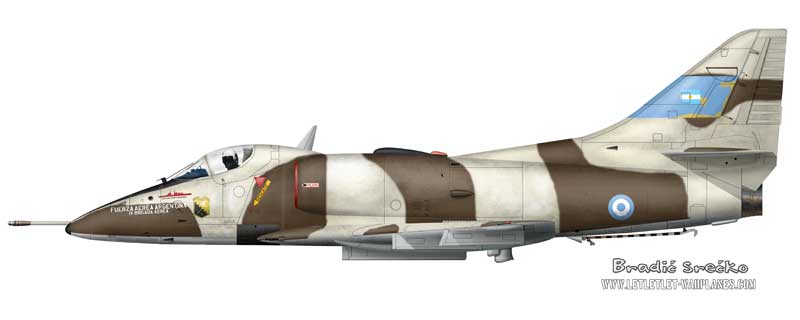
The A-4Ps were followed in 1976 by 25 surplus A-4Cs. They carried registration numbers C-301 to C-325. All aircraft of this series were refurbished by Lockheed Air Service at Ontario, California.
Also the Argentinean navy received a number of Skyhawks. Designated as A-4Q a total of sixteen A-4Bs were refurbished by Douglas for delivery in 1971. Two were additionally supplied for spare parts. These Skyhawks had the capability to carry and fire the AIM-9 Sidewinder missile. The A-4Q carried the registration numbers 3-A-301 to 3-A-314 and 3-A-215 and 3-A-216. The were operational on the aircraft carrier Vienticinco de Mayo, earlier known as the Karel Doorman when it was in use at the Dutch MLD (Marineluchtvaartdienst). The Argentinean Skyhawks were extensively used during the Falklands conflict with Great Britain in 1982. Although they suffered losses, they were capable to sink two British warships by direct bombing attacks and inflicting heavy damage on five others. However, they paid a heavy toll with the loss of 22 Skyhawks to ship-launched anti-aircraft missiles, British Sea-Harriers and crashes. The Skyhawks surviving the Falklands conflict were phased out in 1988.
After the Falkland war and after an embargo to supply new aircraft was lifted, Argentina received over the period 1997-2000 a total of 36 A-4M Skyhawks from the big surplus inventory at Davis-Monthan. They were refurbished by Lockheed Martin and carried the registration numbers C-901 to C-936. The first four of these were TA-4AR (or OA-4M) two-seat trainers. These Skyhawks are also known as the A-4AR ‘Fightinghawk’. They are still operational….
-Australia
Australia was the first export country receiving newly built Skyhawks. Australia ordered for use from its aircraft carrier HMS Melbourne eight Skyhawks based on the A-4F with type designation A-4G. They also ordered two TA-4G trainers based on the U.S. Navy TA-4F.
The first Australian A-4G made its first flight in July 1967 and all ten were delivered on the Melbourne in November 1967. The Australian A-4Gs received U.S. Navy BuNos. The Australian Skyhawks carried an additional registration number N13 placed before the BuNos. and a 3-digit number (882 to 881) on the fuselage nose. As compensation for operational losses a further eight A-4Fs and two TA-4Fs were supplied refurbished from surplus A-4F/TA-4F stock (nos. 870 to 877 and 880, 881). With their aircraft carrier Melbourne decommissioned there was no further need for the Skyhawks and they were phased out in 1984. The ten machines still left (four A-4Gs, four A-4Fs and two TA-4Gs) were sold to New Zealand.
-Israel
Israel placed a contract for the A-4H in October 1967. Basically the A4-H was an A-4F airframe fitted with a brake parachute. Although Israel did not have a naval air force or an aircraft carrier, the arrester hook was maintained. Israel received a first batch of 48 A-4Hs in December 1967 and they soon saw action in the period after the six-days war. Basically the A-4H replaced earlier Dassault Ouragans and Mystères. Based on battle experiences the Israeli soon started to make modifications. The most visible was the extension of the tailpipe to reduce the blast effects of shoulder-fired anti-aircraft missiles. A further 42 A-4Hs followed in 1969. Except for the 90 single seaters, the Israeli air force also purchased twenty-five TA-4Hs for advanced training at the Israel Air Force Flight Training School. The last of this order was supplied in 1970.
All Israeli A4-Hs and TA-4Hs were from newly built airframes. The A-4H soon became the backbone of the Israeli Air Force (IAF) ground attack force.
Further deliveries from the United States in 1971 consisted of sixty A-4Es; all from the inventory of the U.S. Navy and Marine Corps. Also an additional number (24 at least) of TA-4Hs and TA-4Fs were supplied.
The next Skyhawk version supplied to Israel was the A-4N. It carried a number of modifications specially requested by Israel. The A-4N was grossly based on the A-4M including the dorsal hump behind the cockpit with the original 20 mm cannon replaced by heavier 30 mm guns. Total number of A-4Ns delivered to Israel must be, with some reservations, 117 supplied over the period 1973-1975. As far as known they were newly produced. The Skyhawk was intensively used in the Attrition War with Egypt and during the Yom Kippur conflict and losses were substantial. Losses were not only caused by anti-aircraft guns and missiles, but some Skyhawks were also downed by Arab MiG-21s and MiG-23s. Although the numbers of direct deliveries from U.S. inventory were regarded as classified, the total number of Skyhawks used by the IAF must have been at least 335.
Some of these are (status 2014) still used for training; others were scrapped after phase out or sold to other countries (like Indonesia). With these numbers operational, Israel was the largest Skyhawk operator outside the U.S.A.!
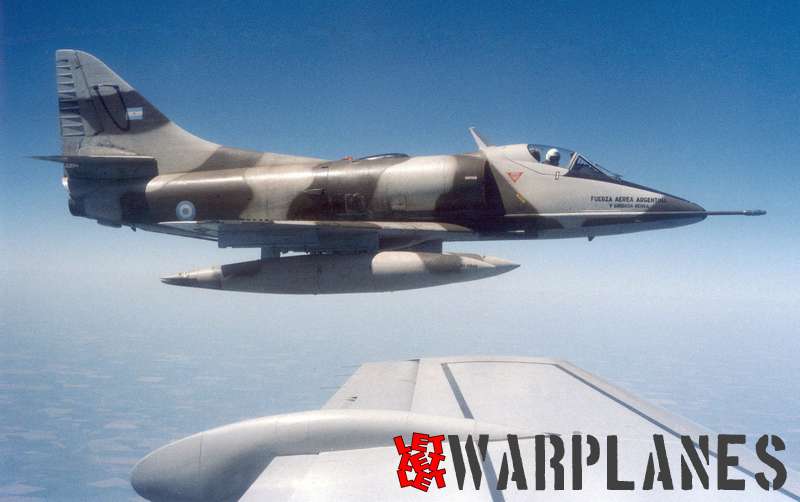
-New Zealand
New Zealand placed in 1968 an order for ten A-4K Skyhawks and four TA-4K two-seaters. They were delivered in May 1970 after transport on board of USS Okinawa. Basically the A-4Ks replaced the English Electric Canberra as a strike aircraft. The registration nos. were NZ6201 to NZ6210 for the single seaters and NZ6251 to NZ 6254 for the trainers. These aircraft were based on the A-4F and TA-4F and were newly built machines. New Zealand also purchased four A-4Gs, four A-4Fs and two TA-4Gs from Australia when this type was phased out in the eighties. Used registration numbers were:
NZ6211 to NZ6214 for the A-4G
NZ6215 to NZ6218 for the A-4F
NZ6255 and NZ6256 for the TA-4G
Skyhawks remained in service until 2001. During their operational life they were never involved in international conflicts.
-Kuwait
In 1975 Kuwait ordered at McDonnell-Douglas thirty Skyhawk single seaters. They were based on the Israeli A-4N and capable to carry a pair of Sidewinder air-to-air missiles. The type designation for Kuwait was A-4KU. Kuwait also ordered five TA-4KU two-seaters.
These aircraft were delivered over the period 1977-1978 and distributed over two attack squadrons. Registration nos. were 801 to 830 for the A-4KU and 881 to 886 for the TA-4KU.
Most Kuwaiti Skyhawks carried the assigned BuNo. on their tail with the registration numbers on the nose. As far as known all Kuwaiti Skyhawks were newly built. During the invasion of Iraq in 1990 a number (some sources state five) of A-4KUs were captured by Iraqi forces but as far as known none of these captured machines ever flew in Iraq. After Desert Storm four were returned to Kuwait. Other A-4KUs fled to Saudi Arabia and participated actively in the war against Iraq. The A-4KU was phased out at the early nineties when it was replaced by the F-18 Hornet. Twenty K-4KUs and three TA-4KUs remaining were sold to Brazil.
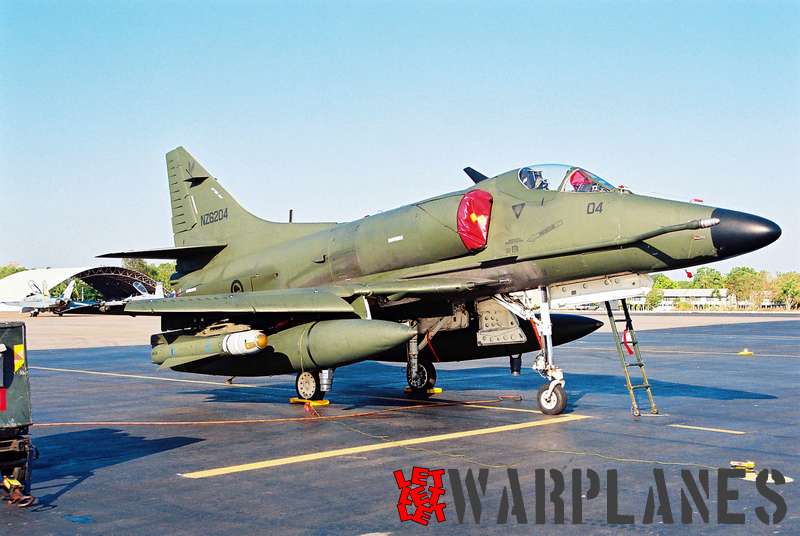
-Malaysia
The Malaysian government obtained in 1979 twenty-five A-4Cs and sixty-three A-4Ls surplus Skyhawks stored at the Davis-Monthan facility in Arizona. It was the intention to upgrade these for service with the Malaysian air force or Tentara Udara Diraja Malaysia (TUDM). The contract for this upgrade was awarded to Grumman. Eventually only forty were upgraded as A-4PTM(36) and TA-4PTM (6). The first A-4PTM flew in April 1984, soon followed by the first TA-4PTM in August. The remaining 48 A-4Cs purchased by Malaysia remained at Davis-Monthan. All Malaysian Skyhawks were delivered in 1984-1985. Their operational career at the TUMD was relatively short with a relatively high attrition rate and they were put out of service by 1994 with the BAé Hawk as replacement.
Used registration numbers were M32-01 to M32-06 for the two seaters and M32-07 to M32-40 for the single seaters.
-Singapore
The small ‘City State’ Singapore ordered in 1973 for its Singapore Air Defence Command (SADC) fifty Skyhawks. They were surplus ex-U.S. Navy A4-Bs and TA-4Bs. They were refurbished by Lockheed Air Services at Ontaria, California and received the type designation A-4S and TA-4S. After the first were delivered the whole production line was relocated at Singapore to the company Singapore Aerospace Maintenance Company (SAMCO). In 1977 an additional 70 surplus airframes (a mix of Ex. U.S. Navy A-4Bs and A-4Cs) were purchased for conversion and update by SAMCO. In 1983 a further number of sixteen A-4Bs was purchased for conversion into two-seaters by Singapore Aircraft Industries. They were re-engined with the much more powerful and fuel-efficient General-Electric F404-GE-100D turbofan engine (the same as used in the F-18 Hornet). Type designation was A-4SU and they were also known as ‘Super Skyhawks. Eight of these were finally produced as TA-4SU fitted with two separate cockpits. Singapore itself was too small to operate this extensive fleet. They found a very creative solution by stationing a number at Cazeau, France.
It must be noted that a number of original airframes were kept for spares and that total number of Skyhawks operational at the SADC (later renamed into the Republic of Singapore Air Force or RSAF) was, with some reservations on the exact numbers, 55 single seaters and 22 two-seaters. The well-known RSAF aerobatic display team ‘Black Knights’ used the Skyhawk until its replacement by the F-16 after 2000. In spite of their name, the Black Knights flew their Skyhawks in a very attractive white and red colour scheme.
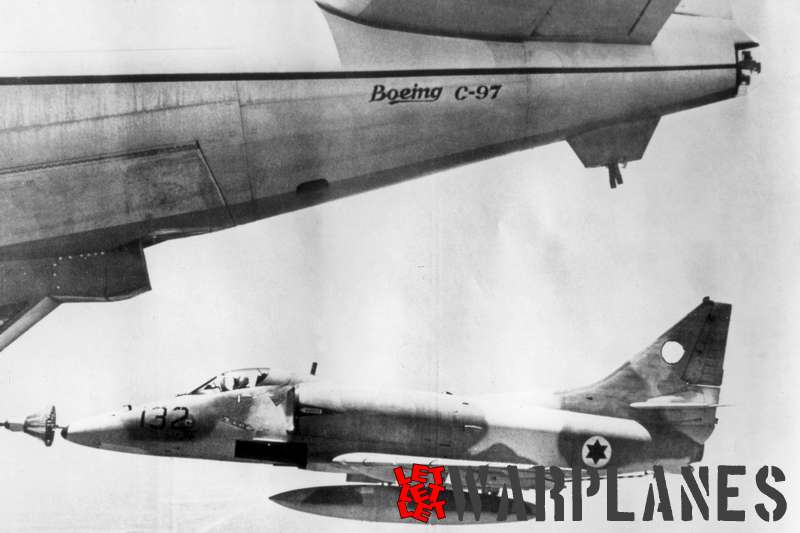
-Indonesia
The Indonesian air force purchased in 1975 and 1985 thirty A-4Es and two TA-4Hs from surplus stock in Israel. Later, an additional two TA-4Js and a number of A-4E single seaters were purchased from ex-U.S. Navy stock. Total number of A-4Es and TA-4Hs operated by Indonesia must have been 46. They were used for operations against rebels in East Timor and West Papua (Irian Jaya) alongside Rockwell OV-10Fs Broncos. They were all phased out over 2003-2005 after being replaced by the Sukhoi Su-27 Flanker.
Registration numbers were:
TL-0415 and TL-0416 for the TA-4H
TL-0418 and TL-0419 for the TA-4J
TL-0401 to TL-0446 for the A-4E
-Brazil
The last country using the Skyhawk for military operations was Brazil. For its naval air force Força Aerovaval de Marinha Brazil purchased in 1997 twenty-three A-4KUs and TA-4KUs from Kuwait when they were phased out. The aircraft, 23 A-4KU single seaters and three TA-4KU two seaters arrived by September 1998 at Rio de Janeiro. They were all transported by road to São de Pedro da Aldeida airbase some 160 km away for final overhaul and refurbishing by Boeing technicians. New type designation became AF-1 for the ex-A-4KUs and AF-1A for the TA-4KU. First flight of the AF-1 was made in May 2000. The Skyhawks were assigned to the Brazilian aircraft carrier Sao Paulo (the ex-French Nay carrier Foch).
Used registration numbers are:
N-1001 to N-1020 for the AF-1
N-1021 to N-1023 for the AF-1A
Nine AF-1s and the three AF-1As were upgraded in 2009 by Embraer and by the end of 2014 they still were operational!
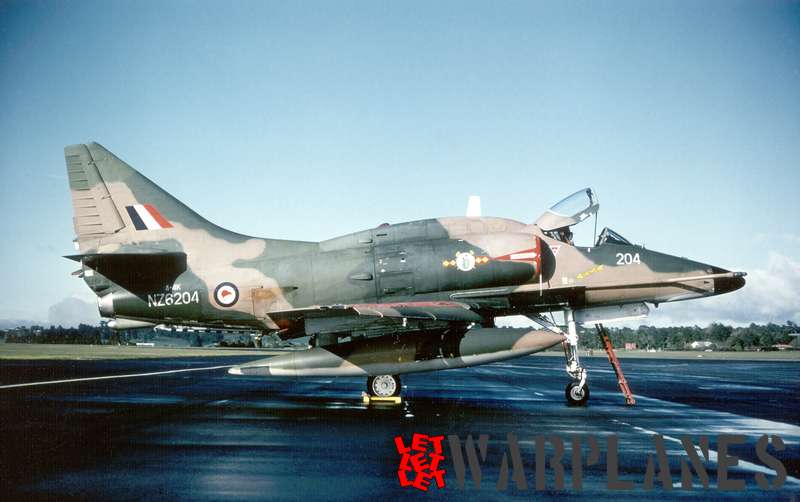
Civil Skyhawks:
Although the Skyhawk was stictly an aircraft for military use, a number of Skyhawks were used carrying a civil registration after they were phased out as military attack plane. Four ex-Israeli A-4Ns were operated by the German company BAE Flight Systems for target towing under military contracts. Other civil owners were ATSI (Advanced Training Services International) based at Phoenix, Arizona; Ace Aerospace at Jacksonville, Florida; ATAC at Newport News, Virginia; Merle Main Enterprise at Ontario, Oregon. There also were some private individuals flying the Skyhawk in the airshow circuit. Exact numbers cannot be given, but at least some 60 are known with a civil registration. Almost all of these are on the U.S. civil register.
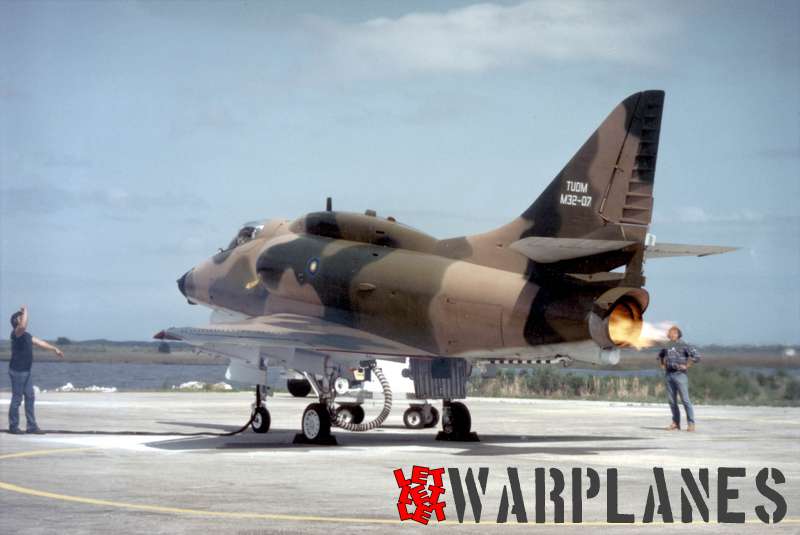
Export production:
Most export versions were refurbished from existing stock.
The following export Skyhawks were newly built:
A-4G for Australia: 13734 to 13741 (8)
TA-4G for Australia: 13926 and 13927 (2)
A-4H for Israel: 155242 to 155289 (48)
157395 to 157428 (34)
157918 to 157925 (8)
TA-4H for Israel: 157429 to 157343 (6)
157926 to 157929 (4)
159546 to 159556 (11)
159795 to 159798 (4)
A4-N for Israel: 158726 to 1587354 (18)
159035 to 159052 (18)
159075 to 159098(24)
159151 to 159545 (31)
159799 to 159 824 (26)
A-4K New Zealand: 157904 to 157913(10)
TA-4K New Zealand: 157914* to 157917 (4)
*The BuNos. were not used on the aircraft when in service at the NZ air force.
A-4KU for Kuwait: 160180 to 160209 (30)
TA-4KU for Kuwait: 160210 to 160215 (6)
Including the export aircraft and the prototype Douglas must have built in total 2,961 Skyhawks between 1954 and 1979.
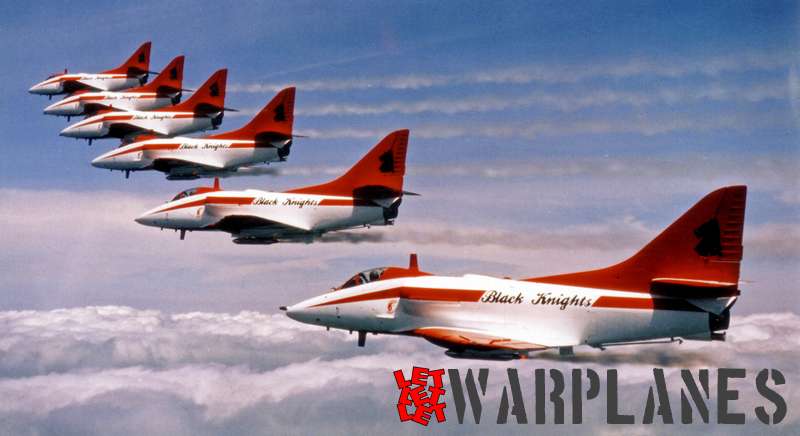
Skyhawks that never flew:
A number of projected Skyhawk versions were never built. The A4D-3 was an improved version of the preceding A4D-2 with a cambered wing leading edge replacing the slats. As a low-level attack plane it had a terrain-following radar and an autopilot. Although a preliminary contract for a few aircraft must have been signed it was cancelled and the A4D-3 never flew. The A4D-2N version more or less replaced it!
Another low-level attack version appeared in 1958 as the A4D-4. It was quite different from the original Skyhawk with the delta wing replaced by longer swept wings and it more or less resembled the Grumman F11F-1 Tiger. The project was not funded.
Quite unknown and without even having a sub-type number, was a project for a Skyhawk version with an extended wing span appearing in August 1973. It was based on the fuselage of the A-4F with folding wings of almost double span. It remained a project.
An even more fantastic version of the Skyhawk was to be launched from a submarine. Boosted by big JATO rockets this version would be launched more or less in the same way as the Vought Regulus and Regulus II radio-guided jet powered early cruise-missiles. Illustrations do not seem to have survived!
When the Skyhawk was offered for export in 1964-1965, Canada seemed interested in the Skyhawk as a replacement for their ageing McDonnell F2H-2 Banshees of the Royal Canadian Navy. Also the Royal Canadian Air Force was interested in the Skyhawk. Canadian designation would have been CA-4E. A small number of U.S. Navy A/4Es was borrowed for flight trials from their aircraft carrier Bonaventura. Although these trials were successful the Skyhawk was not ordered.
Also plans to re-engine the CA-4 with the British Rolls Royce Spey jet engine never materialized.
A few surplus A-4As were fitted with folding wings. They were non-flying machines intended as recruiting aids at airshows and military parades. The wing folding mechanism was purely intended for easier transport by road!
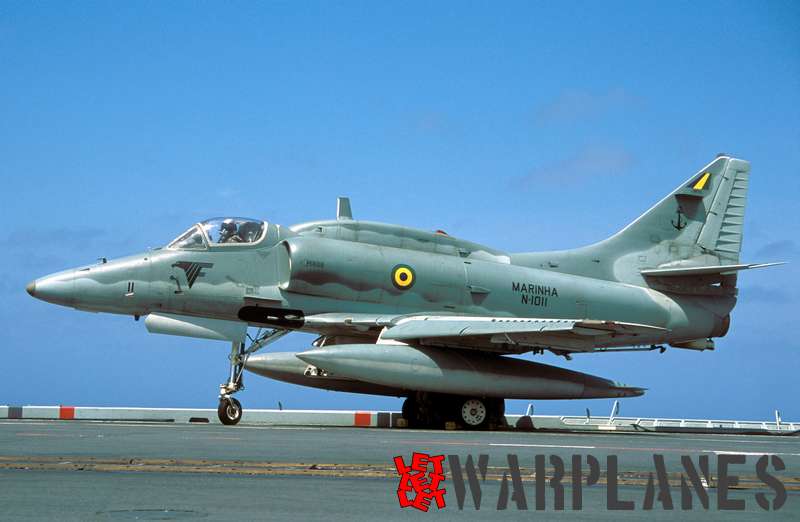
The Skyhawk goes to war:
-Vietnam
Skyhawks were the U.S. Navy’s primary light attack aircraft used over North Vietnam during the early years of the Vietnam War; they were later supplanted by the A-7 Corsair II in the U.S. Navy light attack role. Skyhawks carried out some of the first air strikes by the US during the conflict, and a Marine Skyhawk is believed to have dropped the last American bombs on the country. From 1956 on, Navy Skyhawks were the first aircraft to be deployed outside of the U.S. armed with the AIM-9 Sidewinder. On strike missions, which was the Skyhawk’s normal role, the air-to-air armament was purely for self-defense purposes.
In the early to mid-1960s, standard U.S. Navy A-4B Skyhawk squadrons were assigned to provide daytime fighter protection for anti-submarine warfare aircraft operating from some Essex-class U.S. anti-submarine warfare carriers, these aircraft retained their ground- and sea-attack capabilities. The A-4B model did not have an air-to-air radar, and it required visual identification of targets and guidance from either ships in the fleet or an airborne Grumman E-1 Tracer AEW aircraft. Lightweight and safer to land on smaller decks, Skyhawks would later also play a similar role flying from Australian, Argentinean, and Brazilian upgraded World War II surplus light ASW carriers, which were also unable to operate most large modern fighters. Primary air-to-air armament consisted of the internal 20 mm (.79 in) Colt cannons and ability to carry an AIM-9 Sidewinder missile on both underwing hardpoints, later additions of two more underwing hardpoints on some aircraft made for a total capacity of four AAMs.
Although the first A-4Es were flown in Vietnam in early 1965, the A-4Cs continued to be used until late 1970. During the Vietnam conflict, 362 A-4/TA-4F Skyhawks were lost due to all causes. The U.S. Navy lost 271 A-4s, the U.S. Marine Corps lost 81 A-4s and 10 TA-4Fs. A total of 32 A-4s were lost to surface-to-air missiles (SAMs), and one A-4 was lost in aerial combat to a MiG-17 on 25 April 1967.
General conclusion of the Skyhawk was that it was just too light with a too short range and weapon-carrying capability for this type of warfare. This resulted in the development of a larger and heavier replacement: The LTV Corsair II!
(Source: Wikipedia)
-Israel
Israel was the largest export customer for Skyhawks. The Skyhawk was the first U.S. warplane to be offered to the Israeli Air Force, marking the point where the U.S. took over from France as Israel’s chief military supplier. Deliveries began after the Six-Day War, and A-4s soon formed the backbone of the IAF’s ground-attack force. In IAF Service, the A-4 Skyhawk was named as the Ayit (Hebrew: עיט, for Eagle).
They cost only a quarter of what a Phantom II cost and carried more bombs, although over a shorter range. In the late 1960s and 1970s, Israeli Air Force Skyhawks were the primary ground attack aircraft in the War of Attrition and the Yom Kippur War. Skyhawks carried out bombing missions in the Yom Kippur War, and a considerable proportion of the tactical sorties. They also suffered heavy losses, partially because of their relatively low penetration speed. The Skyhawks bore the brunt of losses to sophisticated SA-6 Gainful missile batteries and anti-aircraft guns. Formal Israeli sources claim only five Israeli Air Force aircraft, of any type, were shot down in air to air duels.
In early 1973, the improved A-4N Skyhawk for Israel entered service, based on the A-4M models used by the U.S. Marine Corps. The different model Skyhawks carried out bombing missions in the Yom Kippur War, and a considerable proportion of the tactical sorties. They also attacked in Operation Peace for the Galilee, and one of them shot down a Syrian MiG-17.
The IAF also operated two-seat models, for operations as well as advanced training and retraining. The first training models arrived in 1967, with the first batch of Skyhawks. During the Yom Kippur war, the Skyhawk order of battle was reinforced with TA-4F and TA-4J models.
During the 1982 Lebanon War an Israeli A-4 piloted by Aharon Ahiaz was shot down over Lebanon by a SA-7 on 6 June 1982. Israel claimed this was one of its only two fixed-wing aircraft shot down over the Beqaa Valley during the air battle of 6 June 1982 to 11 June 1982 where 150 aircraft took part.
In October 2008, it was decided due to maintenance issues that the A-4 Skyhawk fleet would be withdrawn and replaced by more modern aircraft, able to perform equally well in the training role and, if required, close support and interdiction missions on the battlefield. The Skyhawks have been replaced by F-16s in combat roles but were until 2014 still used for pilot training.
(Source: Wikipedia)
-Falklands
During the 1982 Falklands War (Malvinas War), Argentina deployed 48 Skyhawk warplanes (26 A-4P, 12 A-4C and 10 A-4Q aircraft). Armed with unguided bombs and lacking any electronic or missile self-defense, Argentine Air Force Skyhawks sank the Type 42 destroyer Coventry and the Type 21 frigate Antelope as well as inflicting heavy damage on several others: RFA Sir Galahad (which was subsequently scuttled as a war grave), the Type 42 Glasgow, the Leander-class frigate Argonaut, the Type 22 frigate Broadsword, and RFA Sir Tristram. Argentine Navy A-4Qs, flying from Río Grande, Tierra del Fuego naval air station, also played a role in the bombing attacks against British ships, destroying the Type 21 Ardent. In total, 22 Skyhawks (10 A-4Ps, nine A-4Cs, and three A-4Qs) were lost to all causes in the six-week-long war. These losses included eight to British Sea Harriers, seven to ship-launched surface-to-air missiles, four to ground-launched surface-to-air missiles and anti-aircraft fire (including one to “friendly fire”), and three to crashes.
(Source: Wikipedia)
-Kuwait
Kuwaiti Air Force Skyhawks fought in 1991 during Operation Desert Storm. When Iraq invaded Kuwait, the available Skyhawks flew attack missions against the advancing Iraqi forces from deserted roads after their bases were overrun. A total of 24 of the 29 A-4KUs that remained in service with Kuwait (from 36 delivered in the 1970s) escaped to Saudi Arabia. The escaped operated as the Free Kuwait Air Force, flying 1,361 sorties during the liberation of Kuwait. Twenty-three A-4s survived the conflict and the Iraqi invasion, with only one A-4KU (KAF-828, BuNo. 160207) shot down by Iraqi ZSU-23-4 “Shilka” anti-aircraft artillery on 17 January 1991. The pilot, Mohammed Mubarak, ejected and was taken prisoner.[The remaining Kuwaiti Skyhawks were later sold to Brazil, where they currently serve aboard the aircraft carrier NAe São Paulo.
(Source: Wikipedia)
-Iraq
At operations Desert Shield and Desert Storm in Iraq the Skyhawk was already phased out at the U.S. Navy and marines. The only Skyhawks used during these conflicts were from the Kuwait air force! The few Skyhawks captured by Iraqi forces were as far as known never flown in Iraq.
-Indonesia
Indonesia used the Skyhawk, together with the Rockwell Bronco, in the nineties for bombing of Papuan villages in West New Guinea or Irian Jaya. An intensive ‘Islamisation’ campaign of the local inhabitants by the Indonesian government failed. As a counter measure Australian missionaries were kicked out leaving the population not only without proper schools and medical centres, but also without a substantial infrastructure. The Australians had built up a network of small airfields in the populated parts and without incoming planes the population ran into serious problems including food shortages. An uproar was harshly suppressed by the Indonesian armed forces with air attacks on the Papuan villages.
Indonesian Skyhawks were also used for air attacks in East Timor.
Technical details:
A4D-1 A4D-5/A-4E TA-4F TA-4SU
Engine: W J65-W-16A P&W J52-P6A P&W J52-P8A GE P404
Thrust (kg): 3266 3856 4218 4978
(W = Wright; P&W = Pratt & Whitney; GE = General Electric)
Dimensions:
-length 11.70 m 12.28 m 13.05 m 12.70 m
-wingspan 8.38 m 8.38 m 8.38 m 8.38 m
-height 4.54 m 4.54 m 4.54 m 4.54 m
-wing area 24.15 m2 24.15 m2 24.15 m2 24.15 m2
Weights:
-empty ca. 3690 kg 4469 kg 4809 kg –
-max. loaded 9334 kg 11,113 kg 11,113 kg –
Performances:
-max. speed 1069 km/h 1083 km/h 1062 km/h –
-service ceiling – – 11.795 m –
-range – 1865 km 2175 km –
Armament:
-guns 2×20 mm 2×20 mm 2x20mm none
-missiles – – – 2 AIM-9
-bombs Mk.7 nuclear various – various
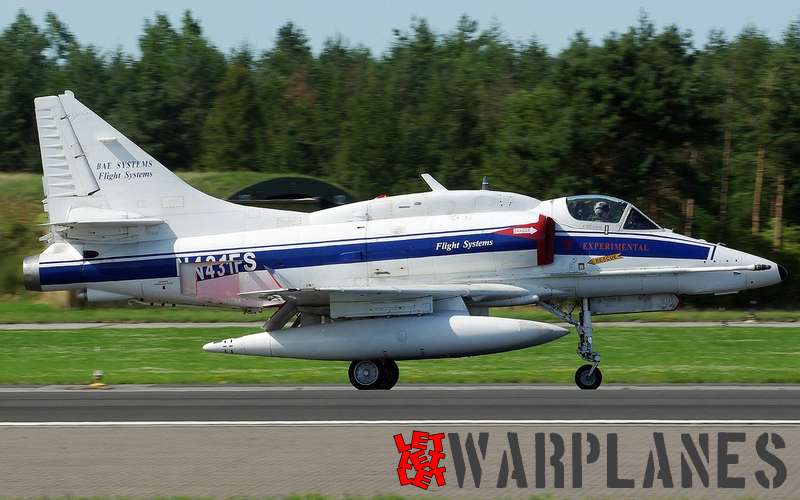
Survivors:
Apparently the Skyhawk is a very favorite display object, maybe because it is not very large.
In the United States a total of 125 Skyhawks are known in museums or other locations and most versions are represented. Unfortunately the XA4D-1 prototype BuNo. 137812 was not preserved. Douglas used it for testing of various configurations of the productions versions and its final fate is not known. Most likely it was scrapped.
World-wide outside the U.S.A. 63 Skyhawks of almost all export versions have survived as museum exhibits or gate guards.
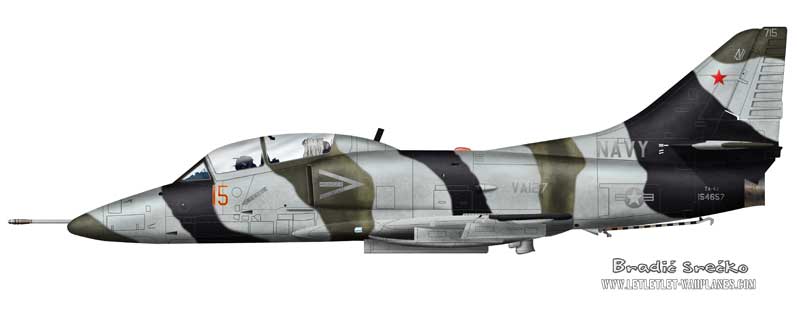
Some examples of exhibited Skyhawks are:
-A-4A no. 137813 at the National Museum of Naval Aviation, Pensacola, Florida
-A-4B in Blue Angel colors at Planes of Fame Museum, Chino, California
-A-4B no. 142928 at the Pima Air & Space Museum, Tuscon, Arizona
-A-4C no. 148314 at the National Air & Space Museum, Washington DC
-A-4B no. C-233 at the National Historical Museum , Buenos Aires, Argentina
-various A-4Es and Hs at the Israeli Air Force Museum at Hatzerim, Israel
Nico Braas
Literature:
-René Francillon, McDonnell Douglas aircraft since 1920 Vol.1, Putnam U.K. (1988)
-Edward Heinemann and Rosario Rausa, Combat aircraft designer – The Ed Heinemann story,
Jane’s Publishing Co. UK/Naval Press Institute USA (1980)
-Jim Winchester, Douglas A-4 Skyhawk, Pen & Sword Books Ltd., UK (2005)
There is an A-4 Skyhawk Association with an excellent website on the Skyhawk: http://a4skyhawk.org/
Photo credits:
Unless stated otherwise, all photographs are from the collection of Mark Nankivil




















































